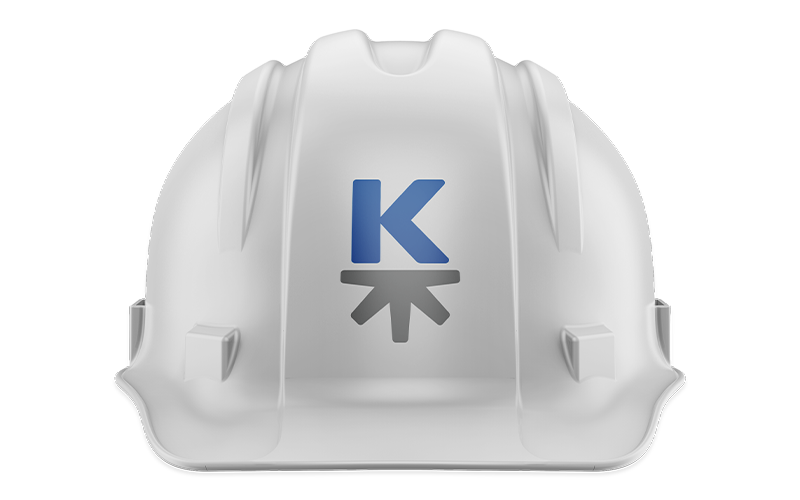How to Build a Strategic Marketing Process

Without a marketing planning process for your business, it’s far too easy to waste significant amounts of time and money by getting completely off track.
The purpose of this article is to help you get the payoff you should from your investment in marketing. It includes actionable tips and will help you build a strategic marketing process for your business.
What Is Strategic Marketing?
Strategic marketing is a system of branding, promotion, and advertising with a focus on long-term results. It involves strategic planning, effective implementation of marketing activities, and continuous improvement.
There are 7 parts to the strategic marketing process:
- Strategy
- Customer Experience
- Content Creation
- Lead Generation
- Closing Sales
- Customer Service
- Continuous Improvement
If you are struggling with one or more of the following marketing challenges, the strategic marketing process could be for you:
- Standing out from the competition
- Getting prospective customers from your target market
- Creating valuable content
- Generating brand awareness
- Increasing traffic to your website
- Using search engine optimization to improve your rankings on Google
- Positioning your company as experts in your industry
- Using marketing automation effectively
- Connecting the dots between marketing planning and revenue growth
Building Your 7 Part Strategic Marketing Process
We’ll cover the concepts behind getting your ideal customers to do business with you. We’ll share marketing tactics that make your customers feel valued, and in turn, recommend your company to their colleagues. We’ll also discuss the importance of measurable goals and analyzing the results. Keeping a close eye on the data will help you repeat your successes.
Part 1: Sustainable Strategy
Strategic marketing planning that increases your revenue and profit takes a collaborative effort. Involve sales, operations, accounting, and marketing managers so they are on the same page. They should be able to describe the plan, the marketing goals, and know what their roles are.
Keep these five things in mind during your market research and marketing planning process:
- Your Vision
- Your vision describes the big-picture view of why you are in business and how your company will contribute to the future of the world. Your vision is something you believe in and are always striving for.
- Your Customers
- Your sales and marketing process will be more effective if you define your target market. Create buyer personas to gain a deeper understanding of your target audiences. Learn how they view products such as yours, and how they prefer to buy.
- Your Brand
- Branding is your effort to influence the way people think about your business and what you sell. Your brand identity defines the essential elements of your marketing. It influences your company name, your marketing messaging, and the way you work with customers.
- Your Visual Identity System
- Your visual identity system includes graphic design elements visible to the outside world. It defines your logo, tagline, typography, colors, and photography styles. It’s important to use these in a consistent way so people can identify your products or services at a glance.
- Marketing Campaigns
- Strategic marketing campaigns comprise many tactics working together to achieve a specific time-bound goal. There should be many measurable points within a campaign so you can analyze your results and make improvements.
“Marketing strategy is a series of integrated actions leading to a sustainable competitive advantage.”
—John Sculley, former CEO of Pepsi-Cola and Apple
Part 2: Customer Experience and The Buying Process
What problems do your ideal customers face? What matters most to them? What is the process a prospective customer has to go through to buy your products or services?
The more you know your customers, the better you’ll be at delivering relevant messaging and the more likely they will want to do business with you. Look at the buying process from your customers point of view. Make it a good experience.
Let’s take a look at the table below illustrating the three stages of the b2b buying process, what the buyer is trying to achieve, and an example of how marketing can influence buyers to choose you when it is time to make a purchase.
| Buying Process | Buyer’s Objectives | How Marketing Helps |
|---|---|---|
| 1. Research | At this point, buyers have a lot of questions and are searching for answers. They are looking for possible solutions to their problem or for vendors that can provide the specific products/services they need. | Blog articles that answer your customer’s questions are an invaluable resource. These types of articles rank well on search engines, demonstrate your expertise, and help your buyers understand how to fix their problem. |
| 2. Evaluate | The buyer has found different options and begins evaluating each in depth to narrow down the list to the most suitable candidates—usually three—to call, request more information, or setup a meeting. | Customer success stories that provide real-world examples will show your buyers how you can help them. Other types of content that build trust are comparisons, testimonials, and reviews. |
| 3. Purchase | The buyer has made their decision and is ready to buy. | Even though sales handles the purchasing stage, marketing still plays a supporting role. Marketing keeps presentation materials, emails, and other communications consistent. What your sales person says to a prospective customer needs to match what they read in your marketing messaging. If there is a disconnect the buyer will feel uneasy and may change their mind. |
“78% of industrial buyers turn to suppliers’ websites during research, 70% use search engines like Google, and 53% talk to colleagues.”
—GlobalSpec, Industrial Buy Cycle Study
Part 3: Content Creation
Gaining trust and building a presence in your intended market is necessary for growth. But it’s no easy task. To do this, your strategic marketing system relies heavily on your website content. Digital assets like ebooks, articles, and white papers attract people to your site and prove expertise.
The best place to start when creating content for your website is to answer common buyer questions. Your sales and customer service departments are great resources for the questions your customers are asking. Create content that explains the answers in detail.
Types of helpful content you can create:
- Blog Articles
- How-To Videos
- Ebooks
- White Papers
- Step-by-Step Guides
- Comparison Charts
- Photo Galleries
- Customer Success Stories
- Testimonials
- Webinars
- Interactive Tools
“If you are unable to understand the cause of a problem, it is impossible to solve it.”
—Naoto Kan
Part 4: Lead Generation
You know that digital marketing offers many marketing and advertising benefits. While many digital strategies and tactics work well, it’s not a good idea to replace traditional marketing tactics all together. Each company is different, it will take the right marketing mix to reach your goals.
Digital marketing campaigns can include:
- Blog Articles
- Search Engine Optimization
- Calls-To-Action
- Landing Pages
- Lead Capture Forms
- Pay-Per-Click Advertising
- Public Relations
- Social Media Marketing
Traditional marketing campaigns can include:
- Product Samples
- Direct Mail
- Print Advertising
- Trade Shows
- Strategic Partnerships
- Public Relations
- Signage
- Vehicle Graphics
Create strategic marketing campaigns with the right digital and traditional marketing mix.
You can make your traditional marketing tactics measurable. Let’s use job-site signs and vehicle graphics as an example. Before digital, the only way you would know if somebody saw your sign or vehicle is if they told you.
Using a dedicated phone number and short URL will tell you how many calls and website visits you are getting from your outdoor advertising. Including both options is important because some people prefer to fill out online forms while others want to call.
“57% of B2B buyers have already made their purchase decision before ever speaking to a sales person.”
—CEB Global
Part 5: Closing Sales
An important aspect of your strategic marketing process is supporting your sales team with forms and procedures that qualify leads, marketing automation that keeps new contacts interested, and presentation collateral that gets attention.
Tools you can use to help close sales:
- Emails & Marketing Automation
- Presentations
- Education Materials
- Pay-Per-Click Remarketing
- Workshops
- Trial Offers
- Demonstrations
- Questionnaires
Even if a potential customer is not ready to buy, it is important to keep in contact.
Providing them with useful, relevant content reinforces your position as the expert and reminds them that you still care about their needs. Keeping in touch on social media, through a direct mailing, or with email marketing lets them know that you are there to answer all questions and concerns.
When they are ready to buy, they will think of you.
“As marketers, we should be changing the mantra from always be closing to always be helping.”
—Jonathan Lister, LinkedIn Ad Sales Chief
Part 6: Customer Service
Many people don’t think about customer service as marketing, but it is one of the most important marketing activities you will do.
You may remember that 53% of industrial buyers talk to colleagues before making a purchase. You definitely want to come up in these conversations in a positive way. You’re also 60-70% more likely to make a sale to a current customer versus a new one. These are two very good reasons it’s important to focus marketing efforts on your current clients.
Marketing tactics you can use to provide excellent customer service:
- Onboarding Emails
- Help Desk
- Customer Training Program
- Surveys
- Referral Program
- Customer Events
- Special Offers
Consider ways marketing can keep your customers interested in doing business with you. Email newsletters, sending thank you cards after a sale, or offering loyalty programs all make your clients feel valued. Customer service doesn’t have to be expensive or elaborate—it just needs to be genuine.
Take a handwritten thank you note included in your packaging for example. It costs nothing, takes you maybe two minutes to write and yet makes your customer feel important and truly appreciated.
Building productive and profitable relationships with customers is the key to sustainable, long-term business success. If a customer likes you and continues to like you, they will do business with you. If they don’t, they won’t.
“Strive not to be a success, but rather to be of value.”
—Albert Einstein
Part 7: Continuous Improvement
Setting Your Goals—The purpose of marketing is to help you grow your business. To determine if it is working, there are a few questions you need to answer before you can measure the results.
First, start with your revenue goals, then work backwards to determine how to accomplish them.
- How many sales do you need to reach your revenue goals?
- How many customers do you need to make those sales?
- How many qualified leads will it take to get those customers?
- How many contacts does it take to get one qualified lead?
- How many people do you need to reach to get one contact?
Measuring Your Results—Review and analyze your marketing campaigns. Look at your pricing strategies, KPI dashboards, metrics, and other analytical data. What can you do better in your next marketing campaign? Remember, continuous improvement is about making small, incremental adjustments instead of large overhauls.
“Measurement is the first step that leads to control and eventually to improvement. If you can’t measure something, you can’t understand it. If you can’t understand it, you can’t control it. If you can’t control it, you can’t improve it.”
—H. James Harrington
Is Strategic Marketing Right for You?
Building a strategic marketing process is a long-term strategy. It will likely be 6 months to a year before you start seeing significant results.
Ask Yourself These Questions when developing your marketing process:
- What is your marketing budget?
- How much time can you dedicate to marketing?
- Do you have the internal resources or do you need to outsource?
- Are you willing to wait for long-term results?
If you make the commitment, the time and effort will be well spent. Setting up the right elements now will give you a competitive advantage. Your marketing will improve over time and grow your bottom line for years.
If you are interested in learning more about our approach to the items discussed in this article, call (970) 744-3611 or send us an email so we can talk about what that would look like.


